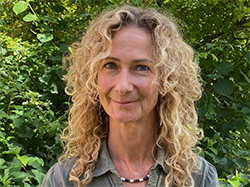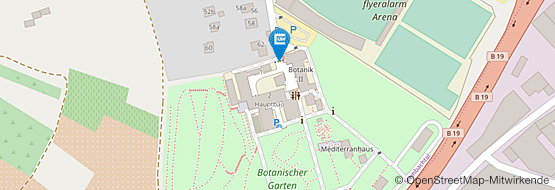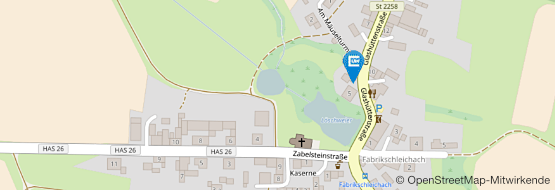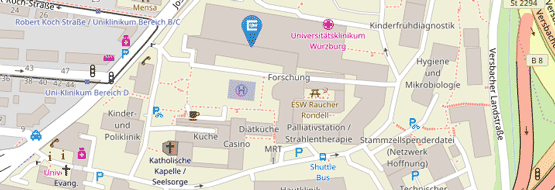Dr. Sabine Nooten
Dr. Sabine Nooten
Biocenter, University of Würzburg
Am Hubland

I am an insect ecologist interested in functional community ecology, biodiversity and climate change. My work seeks to understand how environmental and climatic features influence species traits at the community level. I am also interested in finding out how species traits shape biotic interactions and ecological processes, and how these in turn are influenced by changes in the environment and climate.
Check out my website for more information here
Current projects
The effects of heat waves on flower detection and visitation in bumblebees
This project investigates the effects of heat waves on the bumblebees' ability to detect and locate floral resources. It is funded by the British Ecological Society (BES) Small Research Grant.
Life in challenging environments: identifying species trait-environment relationships in alpine bumblebees
This project seeks to understand how functional traits (morphological, chemical and physiological) enable bumblebees to persist in climatically challenging mountainous environments. This project is funded by the German Research Foundation (DFG) (link).
Send me an email, if this sparks your interest and you would like to work with me.
For more info check out my website
2024 - present Habilitation Position, Department of Animal Ecology and Tropical Biology, University of Würzburg
2021 - 2024 Temporary Principal Investigator, Department of Animal Ecology and Tropical Biology, University of Würzburg
2019 - 2021 Postdoctoral Researcher, School of Biological Sciences, University of Hong Kong, SAR China
2018 - 2019 Postdoctoral Researcher, Department of Biological Sciences, University of New Hampshire, Durham, USA
2017 - 2018 Visiting Research Fellow, University of Würzburg, Würzburg, Germany
2015 - 2016 Visiting Research Fellow, Western Sydney University, Sydney, Australia
2013 - 2015 Postdoctoral Researcher, Hawkesbury Institute for the Environment, Western Sydney University, Sydney, Australia
2013 - 2013 Research Assistant, Brain Behaviour and Evolution, Macquarie University, Sydney, Australia
2008 - 2013 PHD student, Department of Biological Sciences, Macquarie University, Sydney, Australia
2004 - 2006 Research Assistant (Dipl.), Institute for Molecular Biosciences, Goethe-University, Frankfurt a. M., Germany
2002 - 2004 Research Assistant (student), Crustacean Section, Senckenberg Museum, Frankfurt a. M., Germany
1997 - 2004 Diploma student, Institute for Molecular Biosciences, Goethe-University, Frankfurt a. M., Germany
# denotes shared first authorship; ^denotes shared last authorship; *denotes student authors
29. Kuhn* M. and Nooten S.S., Elevation related influence on body size and hairiness in alpine bumblebees. In review, Ecological Entomology
28. Nooten S. S., Korten* H., Schmitt T., Kárpáti Z. (2024) The heat is on: reduced detection of floral scents after heat waves in bumblebees. Proceedings of the Royal Society B: Biological Sciences, 291: 20240352, doi: https://doi.org/10.1098/rspb.2024.0352 , link featured in Nature and Science,
27. Bogar* T. A., Nooten^ S. S. and Guénard^ B. (2023) Development of a new apparatus to partition ant body size reveals their respective functional role within ant communities. Journal of Basic and Applied Ecology,74:90-97, doi: https://doi.org/10.1016/j.baae.2023.12.004 link
(Preprint Authorea, link)
26. Gould E., Fraser H. S., Parker T. H, Nakagawa S., Griffith, S. C., Vesk P. A., Fidler F., … Nooten, S. S. …et al. (85+ authors) 2023 Same data, different analysts: variation in effect sizes due to analytical decisions in ecology and evolutionary biology. Preprint EcoEvoRxiv https://ecoevorxiv.org/repository/view/6000/ link
25. Maihoff F., Sahler S., Schoger S., Brenzinger K., Kallnik K., Sauer N., Bofinger L., Schmitt T., Nooten^ S. S., Classen^ A. (2023) Cuticular hydrocarbons of alpine bumble bees (Hymenoptera: Bombus) are species-specific, but show little evidence of elevation-related climate adaptation. Frontiers in Ecology and Evolution, 11:1082559, doi: 10.3389/fevo.2023.1082559, link
24. Schultheiss# P., Nooten# S. S., Wang R., Wong M. K. L., Brassard F., and Guénard B. (2022) The abundance, biomass and distribution of ants on Earth. The Proceedings of the National Academy of Sciences, 119 (40) e2201550119, doi: 10.1073/pnas.2201550119, link featured in Science, Washington Post, New York Times, The Guardian, BBC, New Scientist and over 300 others. In the top 1% of all research outputs scored by Altmetric
23. Nooten S. S., and Guénard B. Ant communities in disturbed subtropical landscapes: is climate more important than stochastic processes? Oecologia, 200:441–454 doi: 10.1007/s00442-022-05276-8, link
22. Nooten S. S., Chan K. H., Schultheiss P., Bogar T. A. and Guénard B. (2022) Ant body size mediates functional performance and species interactions in carrion decomposer communities. Functional Ecology, doi:10.1111/1365-2435.14039 link blog
21. Nooten S. S. & Rehan S. M. (2022) Effects of land use type and seasonal climate on ground nesting wild bees. Agricultural and Forest Entomology, 2022:1-8, doi:10.1111/afe.12486 link
20. Nooten S. S., Lee R. H. and Guénard B. (2021) Evaluating the conservation value of sacred forests for ant taxonomic, functional and phylogenetic diversity in highly degraded landscapes. Biological Conservation, 109286,doi:10.1016/j.biocon.2021.109286 link
19. Nooten S. S., Odanaka, K. and Rehan S. M. (2020) Effects of farming practice and seasonal phenology on wild bees in blueberry orchards. Northeastern Naturalist, 27:841–860 link
18. Nooten S. S., Odanaka, K. and Rehan S. M. (2020) Characterization of wild bee communities in apple and blueberry orchards. Agricultural and Forest Entomology, 22:157–168, doi:10.1111/afe.12370 link
17. Nooten S. S. & Rehan S. M. (2019) Historical changes in bumble bee body size and range shift of declining species. Biodiversity and Conservation, 29:451–467, doi:10.1007/s10531-019-01893-7 link
16. Nooten S. S., Schultheiss P., Rowe* R. C., Facey* S. L. and Cook J. M. (2019) Habitat complexity affects functional traits and diversity of ant assemblages in urban green spaces (Hymenoptera: Formicidae). Myrmecological News, 29: 67–77, doi:10.25849/myrmecol.news_029:067 link blog
15. Nooten S. S. & Rehan S. M. (2019) Agricultural land use yields reduced foraging efficiency and unviable offspring in the wild bee Ceratina calcarata. Ecological Entomology, 44:534–542, doi:10.1111/een.12730 link
14. Odanaka K., Hall J., Nooten S. and Rehan S. (2019) Wild Bees of Eastern North America: a guide to common pollinators and flowers. University of New Hampshire, Foundation for Food and Agriculture Research. 120 p.
13. Odanaka K., Hall J., Nooten S. and Rehan S. (2018) Wild Bees of New England: A Guide to Common Pollinators & Flowers. University of New Hampshire, Foundation for Food and Agriculture Research. 120 p. pdf
12. Nooten S. S., Schultheiss P., Wright* J., Macdonald, C., Singh, B., Cook J. & Power, S. (2018) What shapes plant and animal diversity on urban golf courses? Urban Ecosystems, 21:565–576, doi:10.1007/s11252-017-0728-4 link video-clip magazine
11. Kremer* J. M. M., Nooten S. S, Cook J. M., Ryalls J. M. W., Barton C. V. M., Johnson S. N. (2018) Elevated atmospheric carbon dioxide concentrations promote ant tending of aphids. Journal of Animal Ecology, 87:1475–1483, doi:10.1111/1365-2656.12842 link
10. Nooten S. S. & Hughes L. (2017) The power of the transplant: direct assessment of climate change impacts. Climatic Change, 144:237–255, doi:10.1007/s10584-017-2037-6 link
9. Nooten S. S. & Andrew N. R. (2017) Transplant Experiments – a Powerful Method to Study Climate Change Impacts (p 46-67). In Global Climate Change and Terrestrial Invertebrates (eds S.N. Johnson & T.H. Jones). Wiley, UK. doi:10.1002/9781119070894.ch4 link
8. Nooten S. S. & Hughes L. (2016) Roles of family and architecture in driving insect community structure: a comparison of nine Australian plant species. Australian Journal of Entomology, 55:423–432 link
7. Facey S. L., Fidler D. B., Rowe R. C., Bromfield L. M., Nooten S. S., Staley J. T., Ellsworth D. S. & Johnson S. N. (2016) Atmospheric change causes declines in woodland arthropods and impacts specific trophic groups. Agricultural and Forest Entomology, 19:101-112 link
6. Schultheiss, P., Wystrach, A., Schwarz, S., Tack, A., Delor, J., Nooten, S. S., Bibost, A.-L., Freas, C. A. & Cheng, K. (2016) Crucial role of ultraviolet light for desert ants in determining direction from the terrestrial panorama. Animal Behaviour, 115:19–28 link
5. Julle-Daniere, E., Schultheiss, P., Wystrach, A., Schwarz, S., Nooten, S. S., Bibost, A.-L. & Cheng, K. (2014) Visual matching in the orientation of desert ants (Melophorus bagoti): The effect of changing skyline height. Ethology, 120:783–792 link
4. Nooten S. S., Andrew N. R. & Hughes L. (2014) Potential impacts of climate change on insect communities: a transplant experiment. PLOS ONE 9(1): e85987 doi:10.1371/journal.pone.0085987 link media
3. Nooten S. S. & Hughes L. (2014) Potential impacts of climate change on patterns of insect herbivory on four Australian plant species. Austral Ecology, 39:668-676; doi:10.1111/aec.12129 link
2. Schultheiss P. & Nooten S. S. (2013) Foraging patterns and strategies in an Australian desert ant. Austral Ecology 38:942–951 link
1. Nooten S. S. & Hughes L. (2013) Patterns of insect herbivory on four Australian shrubby plant species. Australian Journal of Entomology 52:309–314 link








